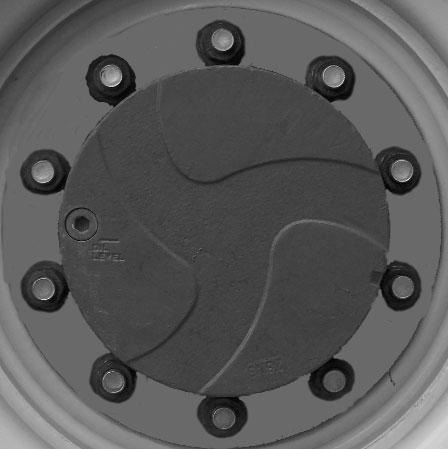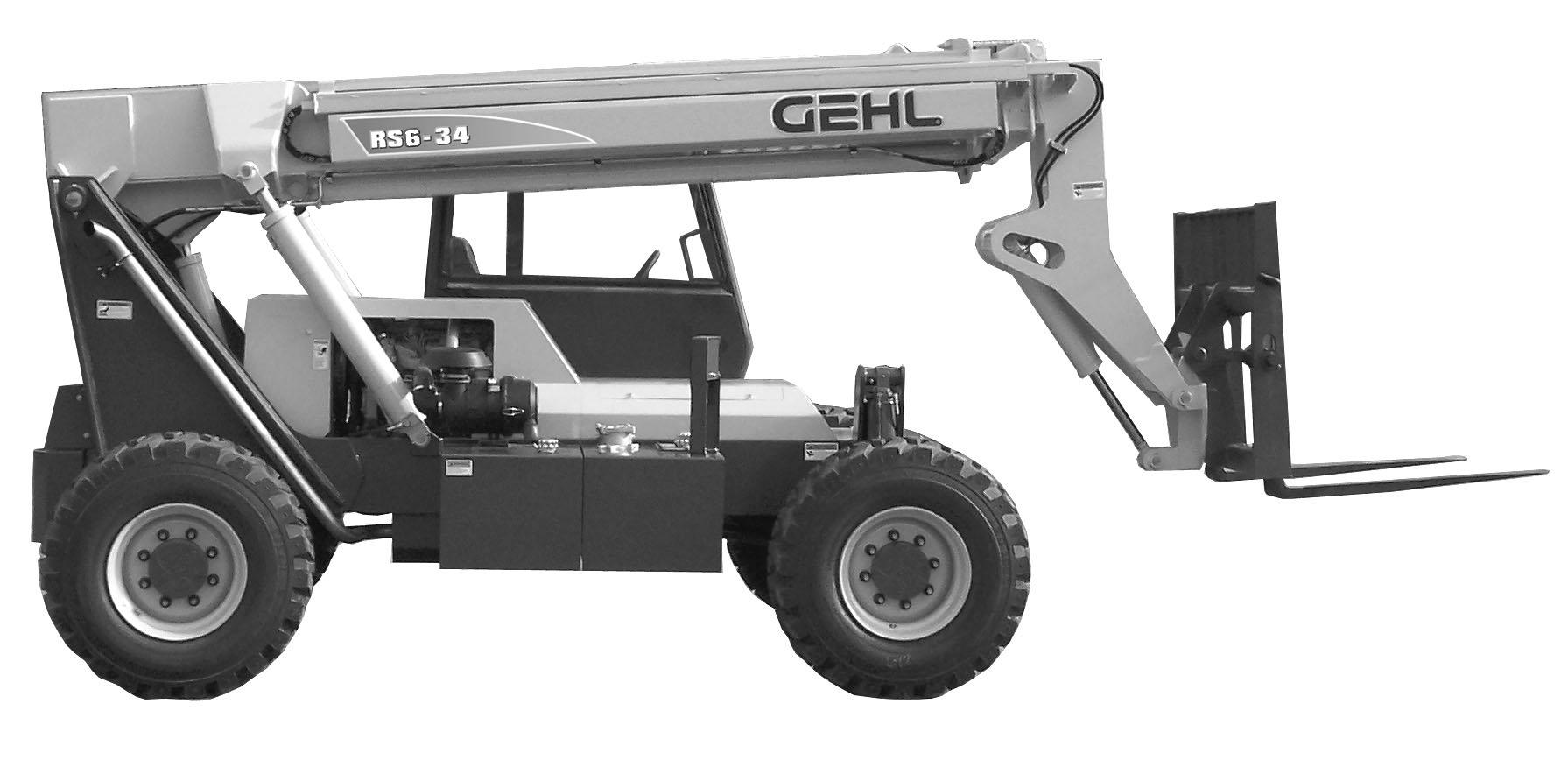GENERAL MACHINE OPERATION
Grade and Slope Precautions The Telescopic Handler complies with industry stability test requirements and is stable when properly operated. However, improper operation, faulty maintenance, and poor housekeeping can contribute to a condition of instability and defeat the purpose of the standard.
WARNING Exhaust fumes can kill. Ensure proper ventilation when starting indoors or in enclosed areas.
The amount of forward and rearward tilt to be used is governed by the application. Although use of maximum rearward tilt is allowable under certain conditions, such as traveling with the load fully lowered, the stability of the machine, as determined by the industry standard tests, does not encompass consideration for excessive tilt at high elevations, or the handling of offcenter loads.
Use proper hand-holds, NOT the steering wheel or control levers as handholds when mounting and dismounting. NEVER operate the machine with safety guards or covers removed. Over-inflated tires can explode and cause injury or death. Tire repairs MUST be made only by authorized personnel using proper tools and equipment.
Handle only loads within the capacity limits of the machine, and which are stable and safely arranged. When attachments are used, extra care should be taken in securing, manipulating, positioning and transporting the load.
Check the Telescopic Handler to be sure all systems are in good operating condition. Perform the following steps before starting the machine the first time each day:
Grade Limits
NOTE: Grade limits are based on ANSI/ITSDF standard B56.6-2005.
1. Check the engine oil, coolant, transmission oil and hydraulic oil levels.
The telescopic handler meets or exceeds the safety standard (ANSI/ITSDF B56.6) stability limits for rough terrain forklifts. The stability tipping limits cover specific, controlled test conditions, which are extremes, and which are not intended to be achieved during normal worksite operations. The following specifications are provided only as information to the operator, and must not be used as a guideline for operating the telescopic handler. For safe operation, always follow the instructions and warnings provided in this manual.
2. Make sure weekly lubrication has been done. 3. Visually inspect for leaks, broken or malfunctioning parts. Make sure all caps, covers and safety shields are in place. 4. Check tires for cuts, bulges, nails, correct pressure, loose wheel nuts, etc. 5. Inspect the work area. Be sure you know where you will make load pickups, lifts, and turns. Look over the terrain of the jobsite for holes, obstacles, slippery surfaces, soft or deep mud.
1. DO NOT place or retrieve loads on an up or down slope or grade that exceeds 7% or 4°.
6. Check clearances of ramps, doorways and passageways. Check overhead clearances if you will travel and place loads near power or telephone lines.
2. DO NOT travel up or down a grade or slope that exceeds 22% or 12° while loaded. 3. DO NOT place or retrieve loads on a side hill with a slope or grade that exceeds 12% or 7°. Regardless of the terrain or position of the wheels, the FRAME MUST BE LEVEL, as indicated by the frame angle indicator on the ROPS/FOPS crossmember.
If the machine is found to be in need of repair or in any way unsafe, or contributes to an unsafe condition, the matter shall be reported immediately to the user’s designated authority. The machine should NOT be operated until it has been restored to a safe operating condition. Operate the travel controls gradually and smoothly when starting, stopping, turning and reversing direction. PRINTED IN U.S.A.
31
913270/CP0907








